
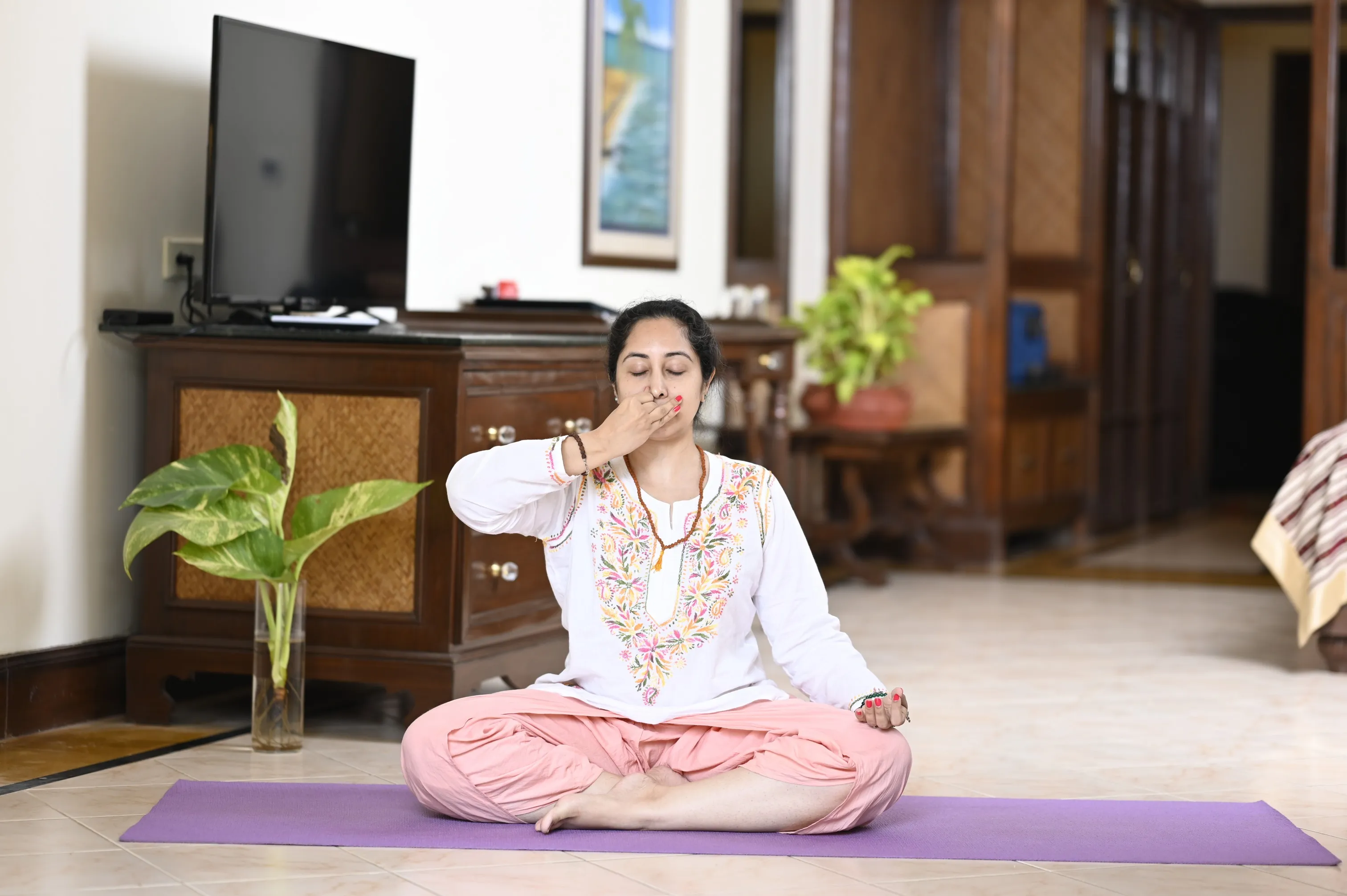
You are stressed and in a frenzy, and someone tells you to “Just breathe!” That’s more frustrating than it is helpful, right?
Wrong!
For thousands of years, different types of yoga breathing techniques have been scientifically proven to:
Whether you're looking for yoga breathing techniques for beginners or advanced pranayama practices, this comprehensive guide covers the essential techniques and how to practice them correctly for maximum benefits.
[inline-CTA-1]
Yoga breathing techniques, known as pranayama in Sanskrit, offer profound benefits for both physical and mental health.
Take a look at this detailed article on how Pranayama and Meditation can benefit you!
These scientifically backed benefits make yoga breathing techniques an essential component of any wellness routine — whether you're a complete beginner or an experienced practitioner.
Want to experience these benefits first-hand? Try this group class on Breathing & Meditation!
Here are 9 beginner-friendly yoga breathing exercises, their benefits, and how to do them correctly and safely:
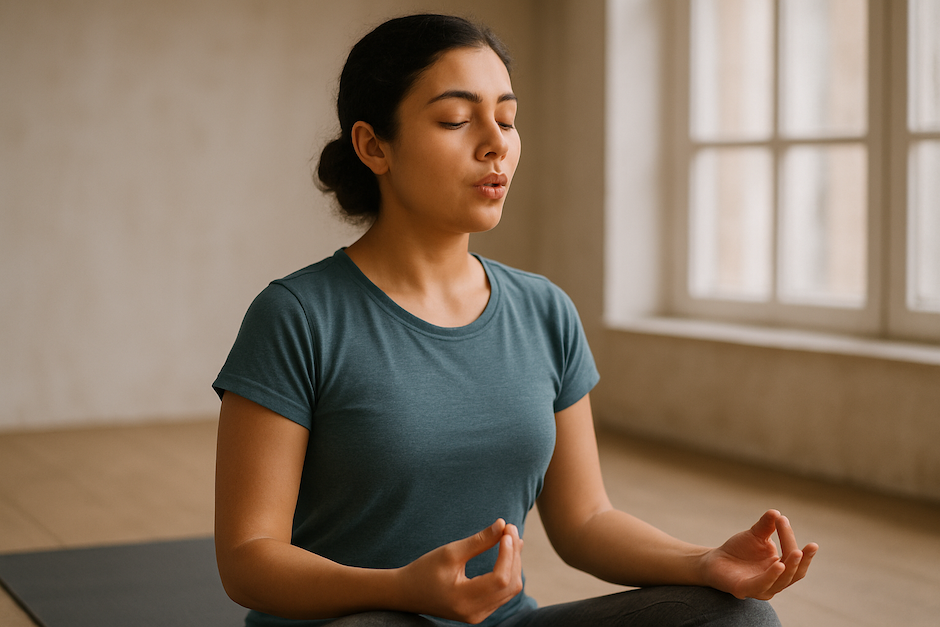
Also known as the “Victorious Breath” Ocean’s Breath, or Ujjayi, is one of the most commonly taught pranayama techniques. It creates a gentle ocean-like sound in the throat, helping you focus and deepen your breath.
How to Practice:
Key Benefits:
Duration:
Safety Tips:
Avoid practicing right before bed, as it can be mildly energizing.

A balancing breath that clears energy channels (nadis) and calms the mind. This breathing technique is ideal for stress relief and mental clarity.
Find out more about Alternate Nostril Breathing in this detailed guide!
How to Practice:
Key Benefits:
Duration:
Safety Tips:
Avoid if you have severe nasal congestion.
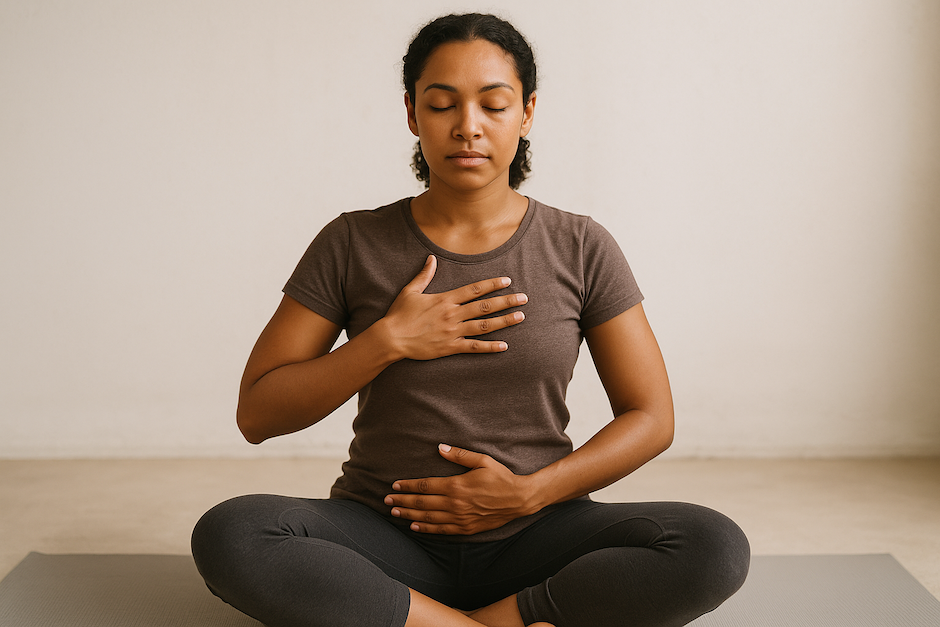
Three-Part Breath helps you become aware of your breathing patterns while expanding your lung capacity. It’s called “three-part” because you consciously fill your abdomen, ribcage, and upper chest with air in sequence during each inhale.
Learn more about Three Part Breath here!
How to Practice:
Key Benefits:
Duration:
Safety Tips:
Safe for most people. Avoid forcing the breath if you feel lightheaded — shorten the inhale and exhale until comfortable.
What It Is:
This breathing technique helps reduce body heat and calms the mind.
How to Practice:
Key Benefits:
Duration:
Safety Tips:
Avoid during very cold weather or if you have respiratory issues.
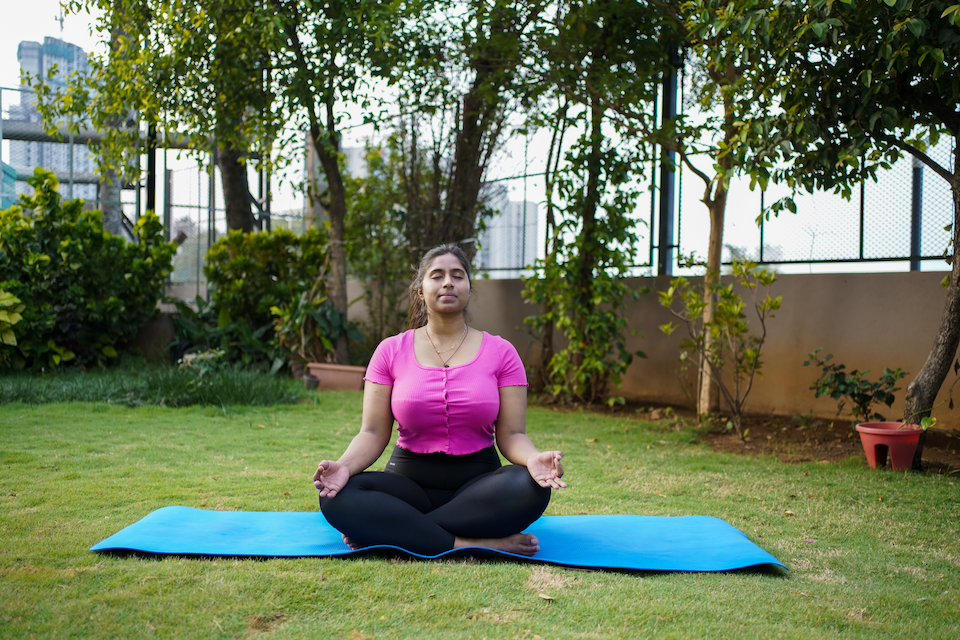
Also known as the “Bee Breath,” this technique uses a gentle humming sound to relax the mind and nervous system.
Want to learn about the various benefits of Humming Bee Breath? Read this detailed article!
How to Practice:
Key Benefits:
Duration:
Safety Tips:
Avoid if you have severe ear infections.
This is an energizing breath that involves forceful inhales and exhales.
How to Practice:
Key Benefits:
Duration:
Safety Tips:
Avoid if you have high blood pressure, heart issues, or are pregnant.
This is a warming, energizing technique that activates the body’s right energy channel.
How to Practice:
Key Benefits:
Duration:
Safety Tips:
Avoid practicing in hot weather or if you have high blood pressure.
This is a cooling and calming breath using the left nostril.
How to Practice:
Key Benefits:
Duration:
Safety Tips:
Avoid practicing it in cold climates or if you have low blood pressure.

This mindful, deep breathing is used in both yoga and everyday life to enhance awareness and relaxation.
How to Practice:
Key Benefits:
Duration:
Safety Tips:
Safe for most people; avoid straining.
With so many different yoga breathing techniques available, choosing the right one for your needs and current state can enhance your practice significantly:
If you’re a beginner, start with these:
If you’re seeking mental and emotional benefits, try these:
To revitalize the body and improve concentration, try:
When the focus is to improve sleep quality and relaxation, try:
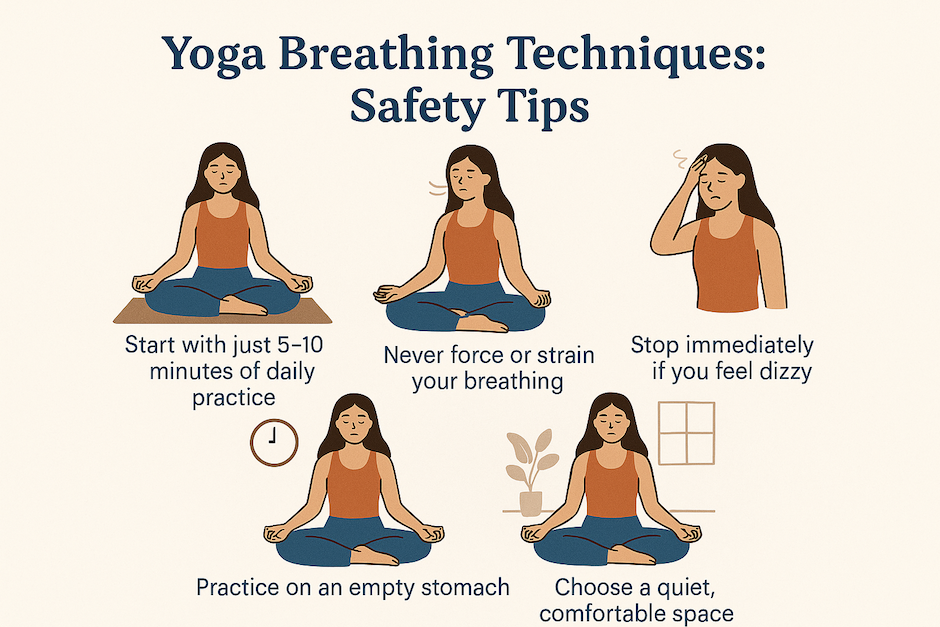
[inline-CTA-2]
While yoga breathing (pranayama) can be incredibly beneficial, practicing it mindfully is key to ensuring a safe and effective practice. Follow these tips for maximum benefits:
By following these guidelines, you’ll build a safe, sustainable routine that supports your health, energy, and peace of mind.
The different types of yoga breathing exercises, when done correctly, can transform your mind, body, and emotional well-being. By understanding the purpose and method of each technique, you can choose the best fit for your needs and practice safely at home.
If you’re a beginner, start small. Even five minutes a day can make a noticeable difference in your stress levels, energy, and focus. As you grow more comfortable, explore different techniques and see how they impact your body and mind.
Most importantly, listen to your body. Breathing should always feel comfortable and relaxing, never forced. Over time, pranayama can become not just a practice, but a natural part of how you live, helping you stay balanced, present, and energized.
The main types include:
Each serves different purposes — from relaxation to boosting energy.
Start with Three-Part Breath, Ujjayi, or Alternate Nostril Breathing. These are gentle, easy to learn, and safe for most people.
Yes! Breaths like Nadi Shodhana, Bhramari, and Ujjayi Breathing activate the parasympathetic nervous system, reducing stress hormones and calming the mind.
For personalized support on anxiety-relief, book a free 1-on-1 session today!
For beginners, aim for 5–10 minutes daily. As you become more comfortable, you can extend to 15–20 minutes or integrate pranayama into your yoga sessions.
Yes! As long as you listen to your body and avoid overexertion. Some advanced techniques like Bhastrika or Kapalabhati should be practiced in moderation and avoided by those with high blood pressure, heart conditions, or pregnancy.
Yes, but choose calming breaths like Bhramari or Chandra Bhedana. Avoid energizing breaths such as Bhastrika or Surya Bhedana late in the evening.
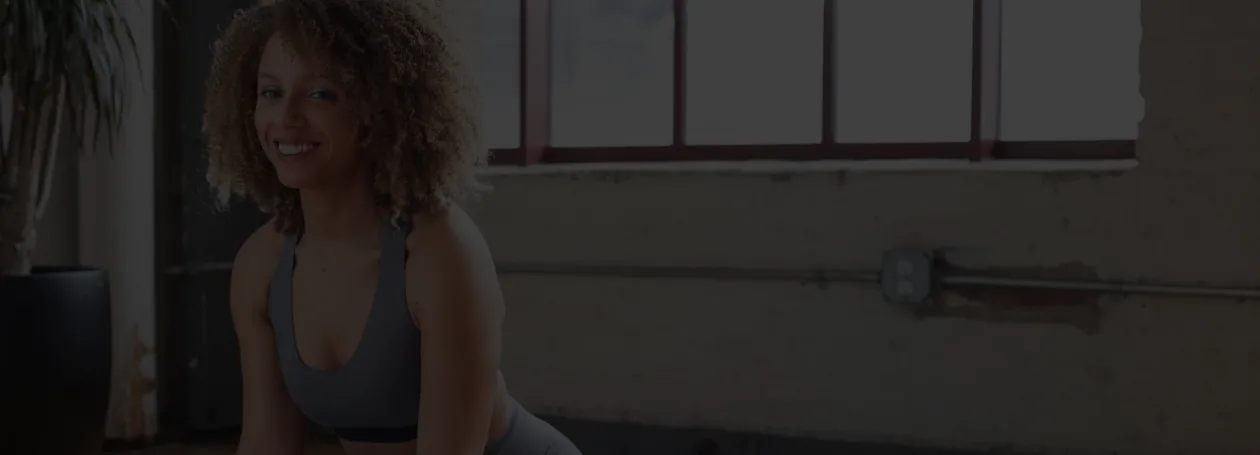
Receive personalized guidance tailored to your unique fitness goals, live with a dedicated coach—no credit card required.